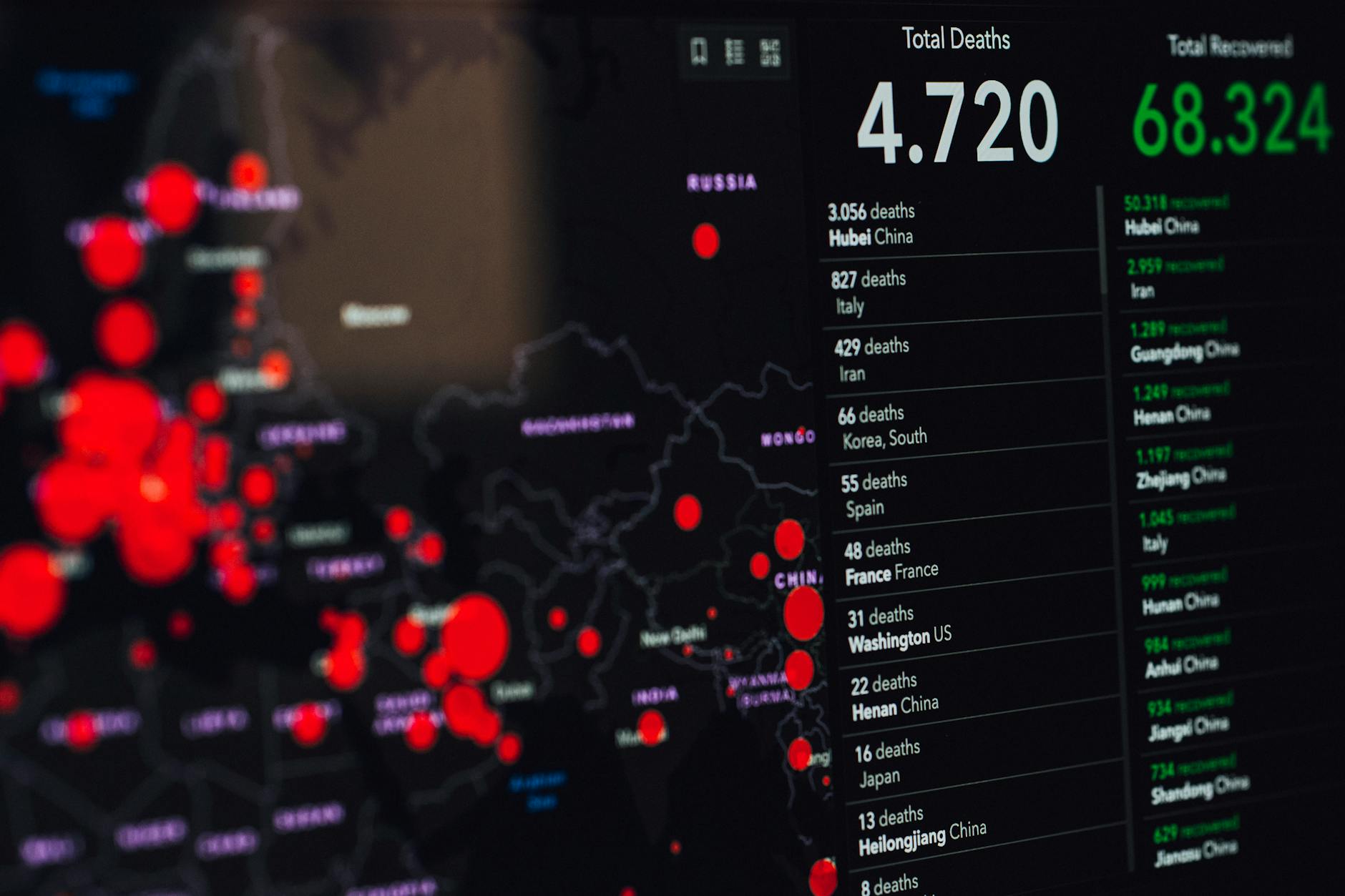Scenario
You are the Consultant in Public Health Medicine for a local health authority. A recent outbreak of foodborne illness has been reported in a large community within your jurisdiction.
Outline the key steps you would take to investigate and manage this outbreak, highlighting the public health principles and evidence-based approaches you would apply.
Advice
The candidate’s response should demonstrate their ability to:
- Apply epidemiological principles and data analysis to investigate the outbreak
- Coordinate a multidisciplinary response and implement evidence-based control measures
- Communicate effectively with stakeholders and the public
- Evaluate the outbreak response and promote continuous improvement in public health practice
Note: The scenario and response were generated using a combination of Perplexity and Chat-GPT.
1. Initial outbreak investigation
Describe the process of gathering and analyzing epidemiological data to identify the source and extent of the outbreak.
To gather and analyze epidemiological data, I would follow these steps:
- Define the case definition based on the clinical features, laboratory results, and exposure history of the suspected cases.
- Conduct active case finding by contacting health care providers, laboratories, and community members to identify any additional cases that meet the case definition.
- Collect demographic, clinical, and exposure data from each case using a standardized questionnaire or interview.
- Perform descriptive analysis of the data to describe the time, place, and person characteristics of the outbreak, and generate hypotheses about the possible source and mode of transmission.
- Construct an epidemic curve to show the distribution of cases over time and identify the likely period of exposure and incubation.
- Map the geographic location of cases and identify any spatial clusters or patterns that may indicate a common source or route of exposure.
- Conduct analytical studies (e.g., cohort, case-control, or cross-sectional) to test the hypotheses and quantify the association between exposure and disease, controlling for potential confounders and biases.
- Calculate measures of effect (e.g., relative risk, odds ratio, or attributable fraction) and measures of precision (e.g., confidence intervals or p-values) to assess the strength and significance of the association.
- Compare the findings with the existing literature and biological plausibility to determine the most likely cause of the outbreak.
Explain how you would coordinate with relevant stakeholders (e.g., primary care, environmental health, food safety authorities) to gather information.
To coordinate with relevant stakeholders, I would follow these steps:
- Identify the key stakeholders who are involved or affected by the outbreak, such as primary care providers, environmental health officers, food safety authorities, local health departments, and other agencies or organizations.
- Establish clear roles and responsibilities for each stakeholder, and assign a lead person or team to coordinate the communication and collaboration among them.
- Communicate regularly and promptly with the stakeholders, using appropriate channels (e.g., phone, email, meetings, reports, etc.) and formats (e.g., verbal, written, visual, etc.).
- Share relevant and accurate information with the stakeholders, such as the case definition, the epidemiological data, the hypotheses, the control measures, and the progress of the investigation and response.
- Solicit feedback and input from the stakeholders, and address any questions, concerns, or suggestions they may have.
- Seek assistance and expertise from the stakeholders when needed, such as obtaining laboratory samples, conducting environmental inspections, tracing contacts, implementing interventions, or evaluating outcomes.
- Acknowledge and appreciate the contributions and cooperation of the stakeholders, and recognize their challenges and limitations.
- Provide updates and recommendations to the stakeholders based on the findings and conclusions of the investigation and response, and discuss the implications and actions for future prevention and preparedness.
2. Outbreak control measures
Outline the control measures you would implement to limit the spread of the outbreak and protect public health.
Some possible control measures I would implement are:
- Isolate the confirmed and probable cases until they are no longer infectious, and provide them with appropriate medical care and support.
- Quarantine the close contacts of the cases for the duration of the incubation period, and monitor them for any signs or symptoms of the disease.
- Educate the cases and contacts on the mode of transmission, the prevention practices, and the need to report any new or worsening symptoms.
- Enhance the surveillance and reporting of the disease, and ensure that all suspected and confirmed cases are notified to the relevant authorities and recorded in a standardized database.
- Conduct active case finding and contact tracing in the affected areas, and expand the case definition if necessary to capture more potential cases.
- Collect and test laboratory specimens from the cases and contacts, and perform epidemiological and molecular typing to confirm the diagnosis and identify the source and strain of the infection.
- Investigate the environmental and behavioral factors that may have contributed to the exposure and transmission of the infection, such as water quality, sanitation, hygiene, food handling, animal contact, travel history, or social gatherings.
- Implement or reinforce the preventive and control measures that are appropriate for the specific mode of transmission, such as boiling or chlorinating water, disinfecting surfaces, washing hands, wearing masks, cooking food thoroughly, vaccinating animals, or avoiding crowds.
- Evaluate the effectiveness and feasibility of the control measures, and modify them as needed based on the changing situation and the available resources.
Discuss the communication strategies you would use to inform and advise the affected community, as well as the wider public.
Some possible communication strategies I would use are:
- Establish a communication team that includes representatives from the health authorities, the affected community, and the media, and assign clear roles and responsibilities for each member.
- Develop and disseminate a communication plan that defines the objectives, messages, audiences, channels, frequency, and evaluation methods of the communication activities.
- Coordinate and align the communication efforts with the outbreak response and control measures, and ensure that the information is accurate, consistent, transparent, and timely.
- Use multiple and appropriate channels to reach the target audiences, such as press releases, social media, radio, television, posters, flyers, or mobile phones.
- Tailor the messages to the needs, preferences, and literacy levels of the different groups, and use simple, clear, and respectful language that avoids technical jargon, acronyms, or abbreviations.
- Provide factual and evidence-based information about the outbreak, such as the cause, symptoms, transmission, prevention, treatment, and status of the outbreak, and address any rumors, myths, or misconceptions that may arise.
- Emphasize the actions and behaviors that the community and the public can take to protect themselves and others from the infection, and explain the rationale and benefits of the control measures that are implemented or recommended.
- Acknowledge the uncertainty and complexity of the situation, and communicate any gaps or limitations in the knowledge or data about the outbreak, and how they are being addressed or resolved.
- Express empathy and compassion for the affected people and their families, and recognize the challenges and difficulties they may face, such as stigma, discrimination, isolation, fear, anxiety, or stress.
- Solicit feedback and input from the community and the public, and encourage them to ask questions, share concerns, or provide suggestions, and respond to them promptly and respectfully.
- Monitor and evaluate the impact and effectiveness of the communication activities, and use various indicators and methods to measure them, such as media coverage, audience reach, message recall, knowledge change, behavior change, or satisfaction level.
- Adjust and improve the communication strategies based on the evaluation results and the changing situation, and incorporate the lessons learned and best practices for future communication.
3. Evaluation and learning
Explain how you would evaluate the effectiveness of the outbreak response and identify areas for improvement.
Some possible ways I would evaluate the effectiveness of the outbreak response and identify areas for improvement are:
- Compare the actual outcomes of the outbreak response with the expected or desired outcomes, such as the number of cases, deaths, hospitalizations, or recoveries, the duration and severity of the outbreak, or the cost and resource utilization of the response.
- Use quantitative and qualitative methods to collect and analyze data and information from various sources, such as epidemiological surveillance, laboratory testing, case investigation, contact tracing, health care facilities, community surveys, or stakeholder interviews.
- Assess the strengths and weaknesses of the response activities, and identify the factors that facilitated or hindered their implementation, such as the timeliness, adequacy, appropriateness, efficiency, effectiveness, equity, or sustainability of the interventions, the coordination, communication, collaboration, or leadership among the response partners, the availability, accessibility, quality, or acceptability of the resources, services, or support, or the level of awareness, knowledge, compliance, or satisfaction of the community and the public.
- Use a participatory and inclusive approach to involve the relevant stakeholders in the evaluation process, such as the health authorities, the outbreak response team, the health care workers, the affected community, the media, the donors, or the experts, and solicit their feedback, opinions, perspectives, or recommendations on the response activities and outcomes.
- Document and disseminate the evaluation findings, conclusions, and recommendations in a clear, concise, and comprehensive report, and use various formats and channels to communicate them to the intended audiences, such as the decision-makers, the response partners, the community, or the public.
- Use the evaluation results to inform and guide the planning, implementation, and improvement of the current or future outbreak response, and incorporate the best practices, lessons learned, and evidence-based recommendations into the outbreak preparedness and management plans, policies, protocols, or guidelines.
Describe how you would share the lessons learned from this experience to enhance future outbreak preparedness and management.
Some possible ways I would share the lessons learned from this experience to enhance future outbreak preparedness and management are:
- Organize and facilitate a debriefing or after-action review session with the key stakeholders involved in the outbreak response, such as the health authorities, the outbreak response team, the health care workers, the affected community, the media, the donors, or the experts, and discuss the successes, challenges, gaps, or opportunities for improvement of the response activities and outcomes.
- Prepare and publish a comprehensive and systematic report that summarizes and synthesizes the main findings, conclusions, and recommendations from the evaluation of the outbreak response, and highlight the best practices, lessons learned, and evidence-based suggestions for future outbreak preparedness and management.
- Develop and update the outbreak preparedness and management plans, policies, protocols, or guidelines based on the evaluation results and the lessons learned, and incorporate the relevant and applicable recommendations, standards, or indicators for improving the quality, efficiency, effectiveness, equity, or sustainability of the response interventions and outcomes.
- Conduct and participate in knowledge exchange and dissemination activities, such as workshops, webinars, conferences, publications, or newsletters, and share the evaluation findings, lessons learned, and best practices with the relevant and interested audiences, such as the decision-makers, the response partners, the community, the public, the researchers, or the practitioners, and learn from their experiences, feedback, or insights.
- Strengthen and expand the capacity and capabilities of the health system and the workforce to prevent, detect, respond to, and recover from outbreaks, and provide training, mentoring, coaching, or support to the health authorities, the outbreak response team, the health care workers, or the community on the outbreak preparedness and management plans, policies, protocols, or guidelines, and the evaluation findings, lessons learned, and best practices.





